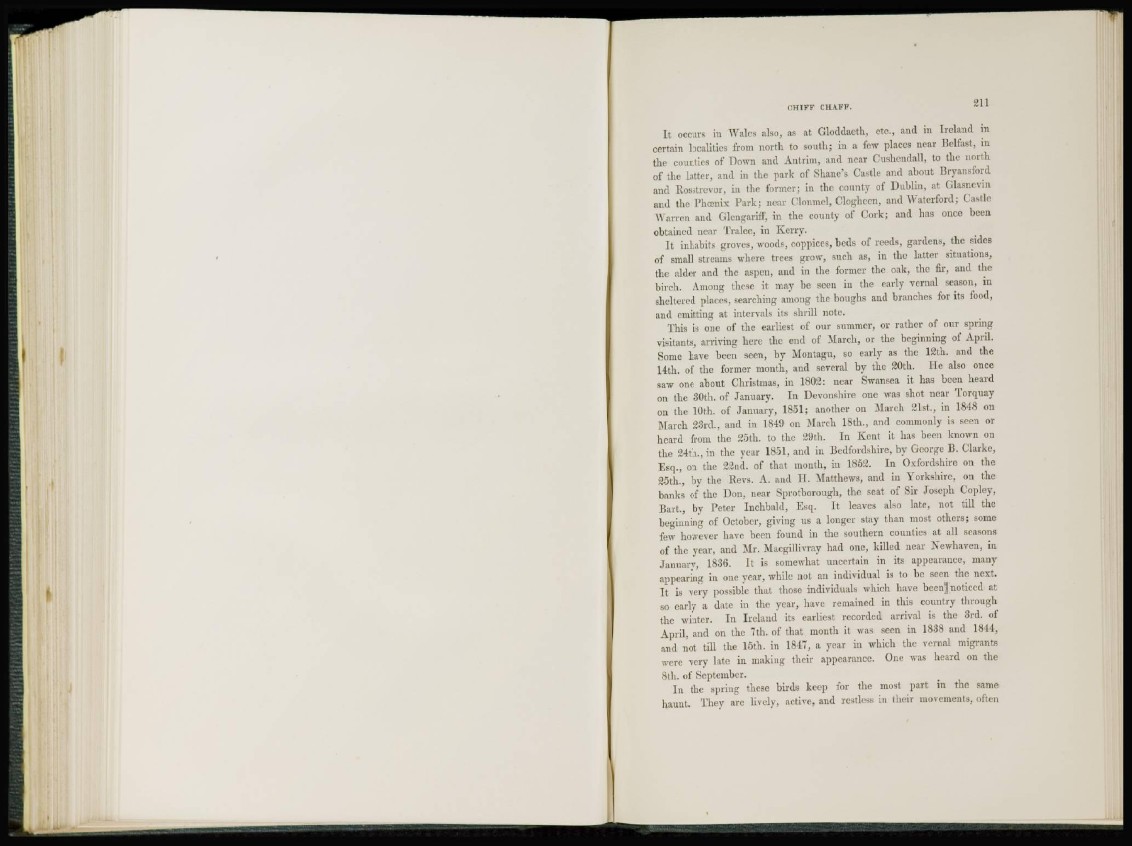
I t occurs in Wales also, as at Gloddacth, etc., and in Ireland in
certain localities from north to south; in a few places near Belfast, in
the counties of Down and Antrim, and near Cushendall, to the north
of the latter, and in the park of Shane's Castle and about Bryansford
and Rosstrevor, in the former; in the county of Dublin, at Glasncvin
and the I'lurniv Park; near (4onmel, Cloghcen, and Waterford; Castle
Warren and Glengariff, in the county of Cork; and has once been
obtained near Tralee, in Kerry.
I t inhabits groves, woods, coppices, beds of roods, gardens, the sides
of small streams whore trees grow, such as, in the latter situations,
the alder and the aspen, and in the former the oak, the fir, and the
birch. Among these it may be seen in the early vernal season, in
sheltered places, searching among the boughs and branches for its food,
and emitting at intervals its shrill note.
This is one of the earliest of our summer, or rather of our spring
visitants, arriving here the end of March, or the beginning of April.
Some have been seen, by Montagu, so early as the 12th. and the
14th. of the former month, and several by the 20th. He also once
saw one about Christmas, in 1802: near Swansea it has been heard
on the 30th. of January. In Devonshire one was shot near Torquay
on the 10th. of January, 1851; another on March 21st., in 1848 on
March 23rd., and in 1849 on March 18th., and commonly is soon or
heard from the 25th. to the 29th. In Kent it has been known on
the 24th., in the year 1851, and in Bedfordshire, by George B. Clarke,
Esq., on the 22nd. of that month, in 1852. In Oxfordshire on the
25th., by the Revs. A. and H. Matthews, and in Yorkshire, on the
banks of the Don, near Sprotborough, the seat of Sir Joseph Copley,
Bart., by Peter Inchbald, Esq. It leaves also late, not till the
beginning of October, giving us a longer stay than most others; some
few however have been found in the southern counties at all seasons
of the year, and Mr. MacgilHvray had one, killed near Newhaven, in
January, 183G. It is somewhat uncertain in its appearance, many
appearing in one year, while not an individual is to be seen the next.
I t is very possible that those individuals which have been|j noticed at
so early a date in the year, have remained in this country through
the winter. In Ireland its earliest recorded arrival is the 3rd. of
April, and on the 7th. of that month it was seen in 1838 and 1844,
and not till the 15th. in 1847, a year in which the vernal migrants
were very late in making their appearance. One was heard on tin1
8th. of September.
I n the spring these birds keep for the most part in the same
haunt. They are lively, active, and restless in their movements, often